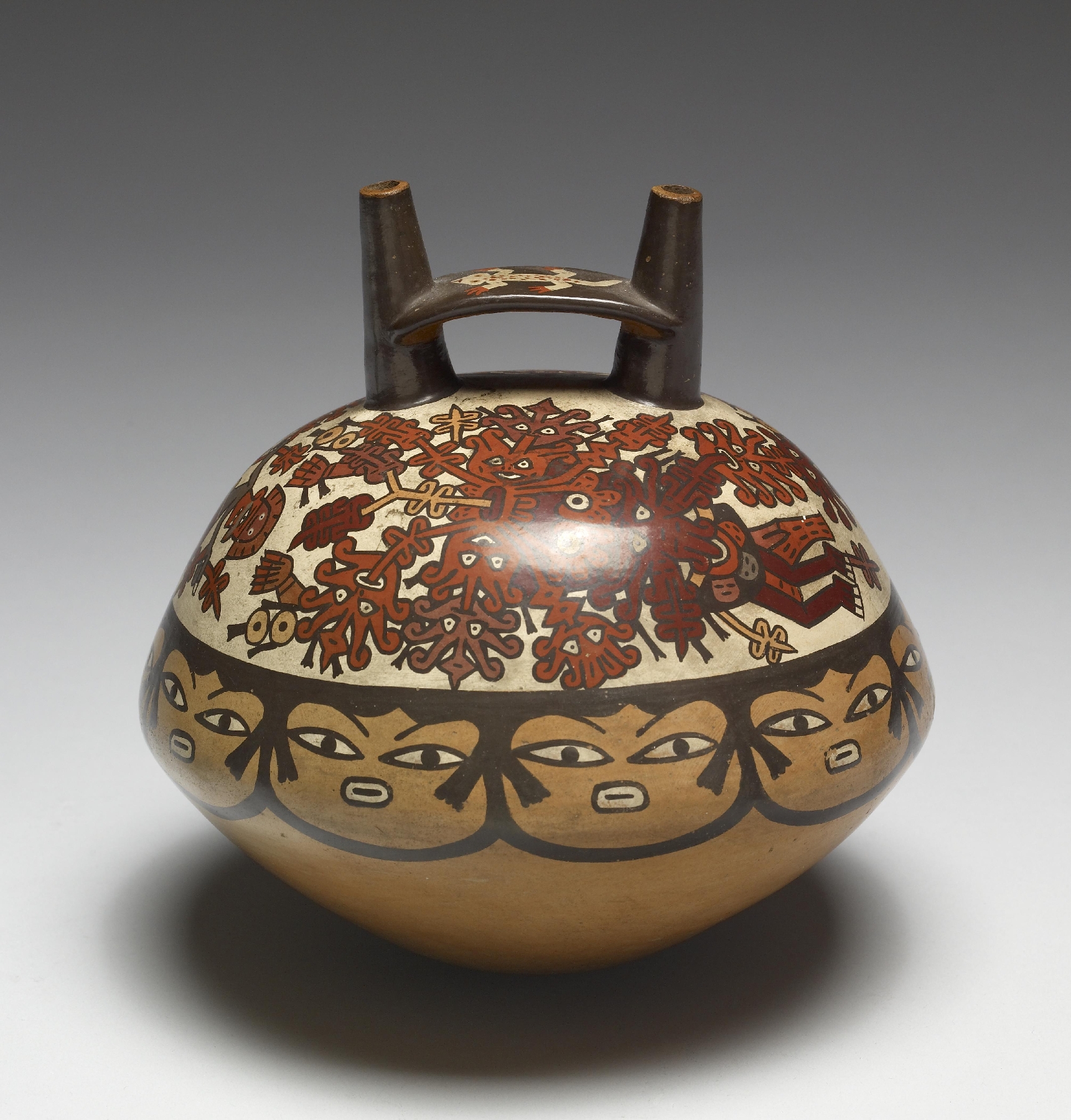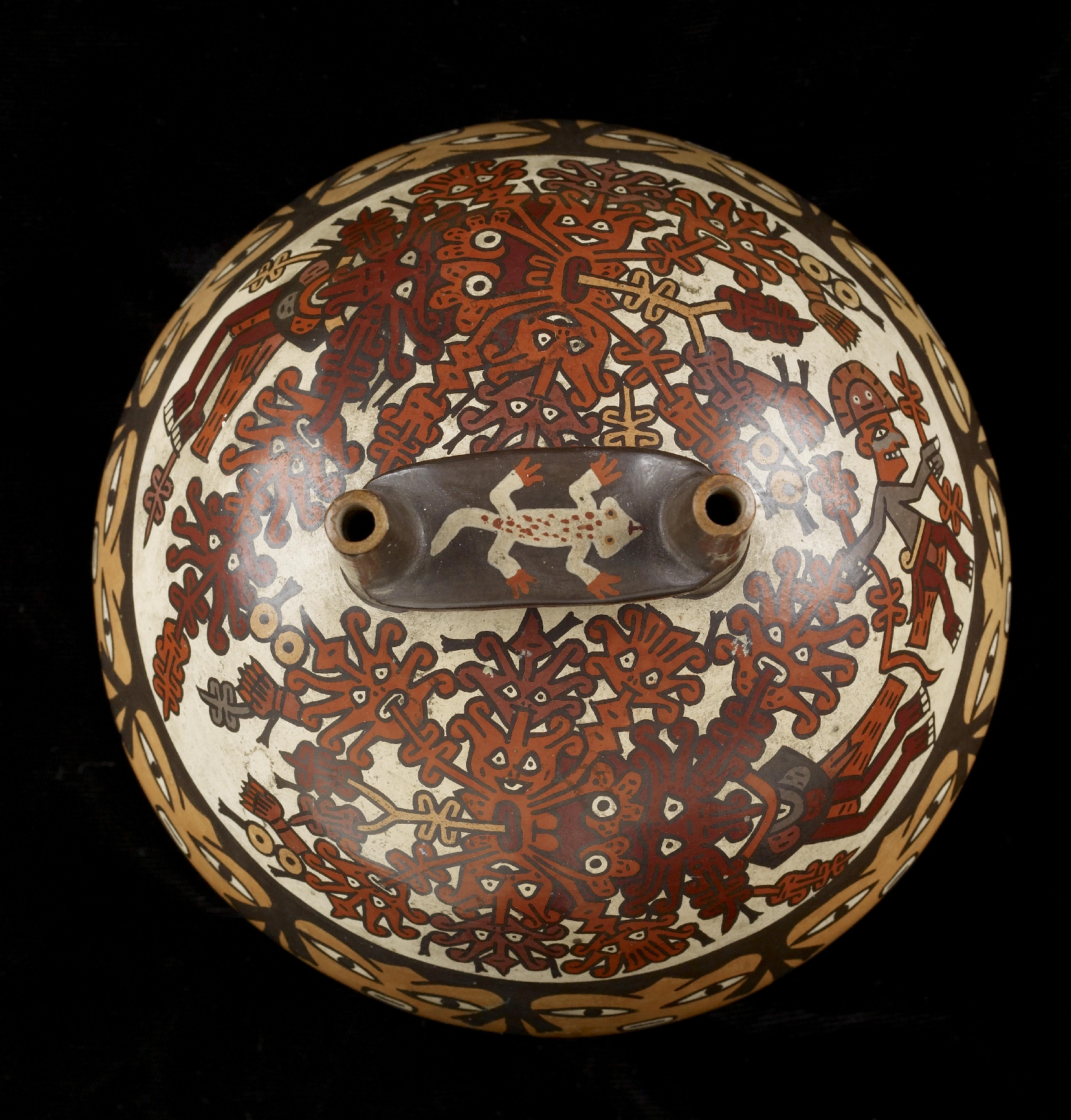Stirrup-Spouted Bottle
(Ancient Americas )
This object pertains to the Andean theme of sacrifice and death as a religious act of regeneration and renewal. The expertly painted Nazca bottle, with double spouts and bridge handle, represents the highest achievement in quality and pictorial complexity of Nazca pottery painting. Its imagery features the so-called Anthropomorphic Mythical Being, which may symbolize powerful spirits in nature. At least fifteen subtypes of this spirit being are known, each perhaps corresponding to specific forces. A shared icon among them is the presence of trophy heads hanging at the waist (as seen here) or in close proximity to its mouth. On this vessel, a Nazca warrior grasps the being's "tail" as if he has captured or is in control of the spirit force. The line of female heads around the vessel may be a symbolic representation of the earth.
The images on the pottery vessel relate to the theme of sacrifice and agricultural fertility. Among the Nazca, the severed head was likened to a seed from which sprang renewed life in the form of young plants; large caches of trophy heads found at Nazca sites are the remains of religious rites intended to ensure agricultural success. In short, the human trophy head was not only the most sacred of offerings to the spiritual forces of nature; they were also integral to the pan-Andean ideology of death and regeneration, being but two parts of the same universal dyad. Death, caused by sacrifice and decapitation, is not the end; rather it leads to rejuvenation and new life.
Provenance
Provenance (from the French provenir, 'to come from/forth') is the chronology of the ownership, custody, or location of a historical object.
John G. Bourne; given to Walters Art Museum, 2009.
Exhibitions
| 2018 | Crowning Glory: Art of the Americas. The Walters Art Museum, Baltimore. |
| 2012-2013 | Exploring Art of the Ancient Americas: The John Bourne Collection Gift. The Walters Art Museum, Baltimore; Frist Center for the Visual Arts, Nashville. |
| 1998-2008 | Art of Ancient America, 1500 B.C.-1400 A.D.. Museum of New Mexico, Santa Fe. |
Geographies
Peru, South Coast (Place of Origin)
Measurements
H: 6 11/16 x Diam: 6 5/8 in. (16.99 x 16.76 cm)
Credit Line
Gift of John Bourne, 2009
Location in Museum
Not on view
Accession Number
In libraries, galleries, museums, and archives, an accession number is a unique identifier assigned to each object in the collection.
In libraries, galleries, museums, and archives, an accession number is a unique identifier assigned to each object in the collection.
2009.20.28




